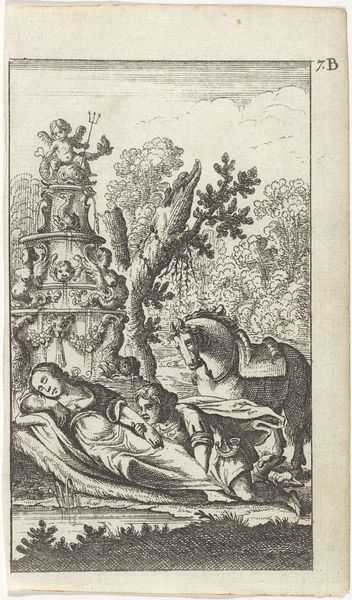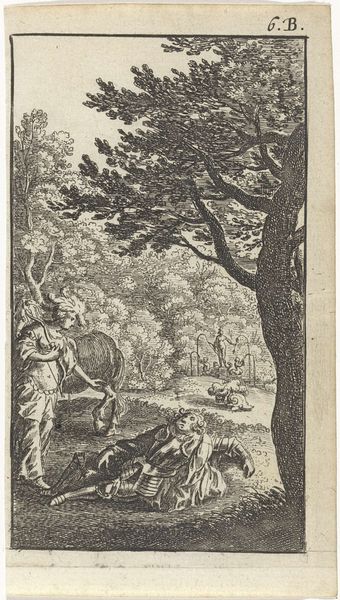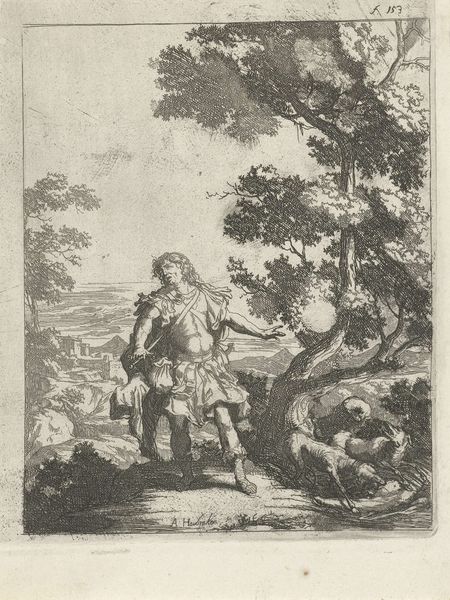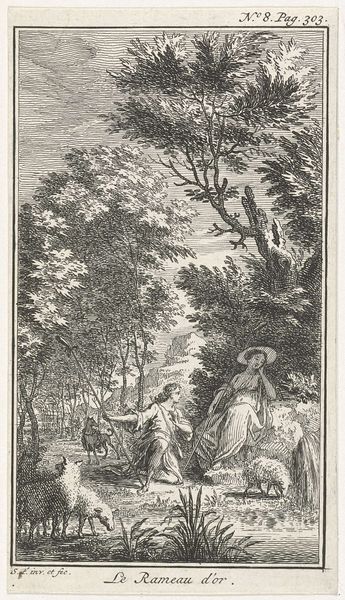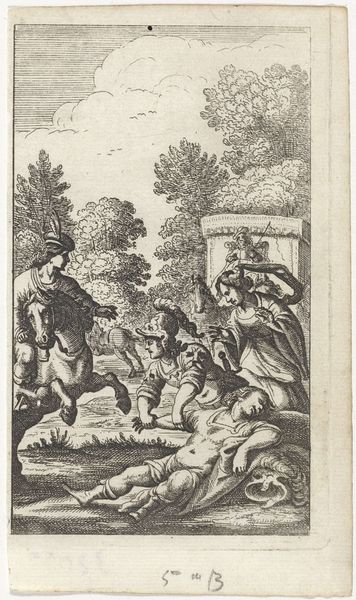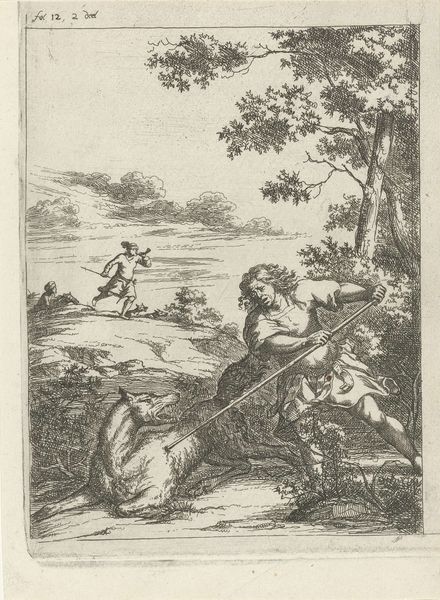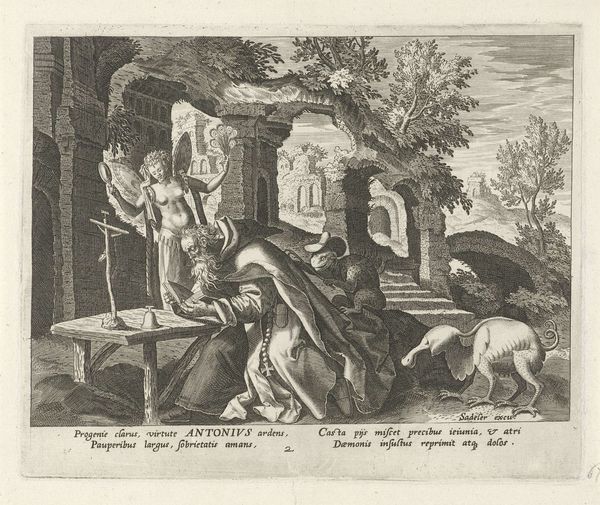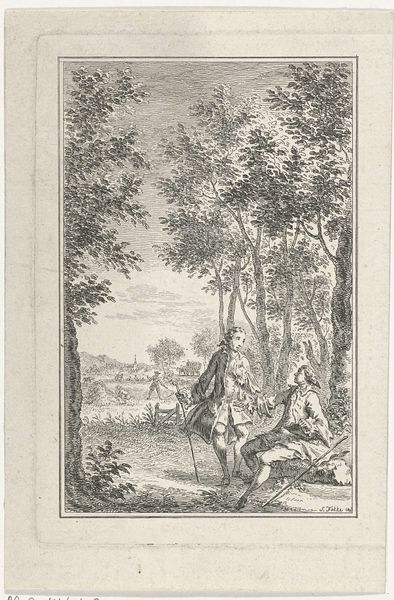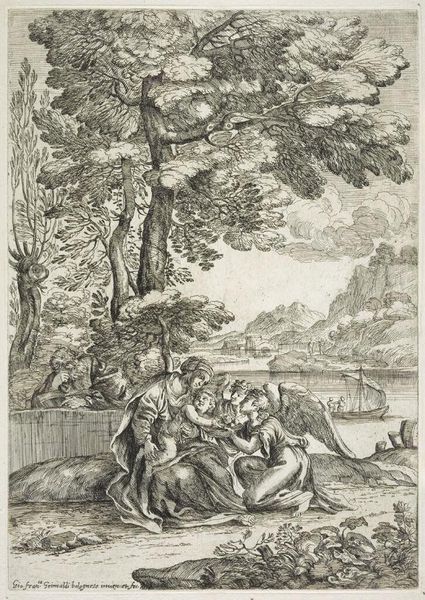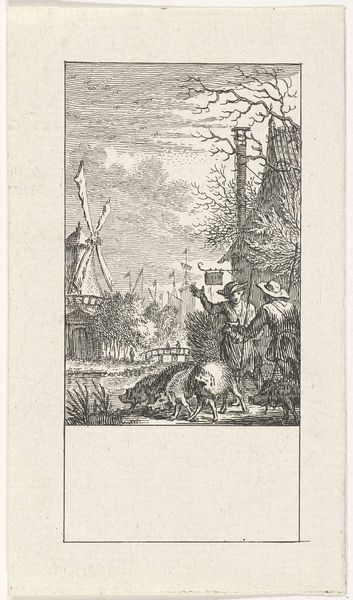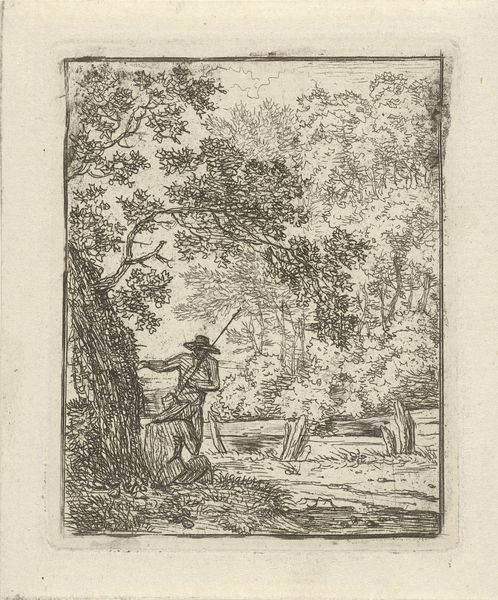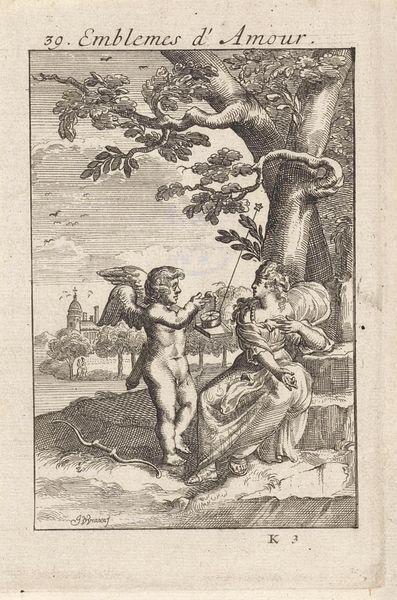
drawing, ink, engraving
#
drawing
#
pen illustration
#
landscape
#
ink
#
genre-painting
#
engraving
#
miniature
#
rococo
Dimensions: height 103 mm, width 59 mm
Copyright: Rijks Museum: Open Domain
Editor: This is "Mei," a miniature engraving by Simon Fokke, created sometime between 1722 and 1784. The scene is incredibly detailed for its size, showing people in a landscape with water features. It seems to depict some kind of leisure activity, perhaps in a wealthy estate. What do you see in this piece? Curator: Looking at "Mei" through a historical lens, I'm immediately struck by the way it reflects the Rococo period's emphasis on aristocratic leisure and pleasure. Consider the setting, likely a private garden – spaces increasingly cultivated by the elite as symbols of their power and control over nature. What does the composition suggest to you about the social roles being represented? Editor: It feels like the scene is staged for display. There's the central couple, seemingly the focal point, with others around them. Is that common? Curator: Precisely. The arrangement of figures suggests a careful construction of social hierarchy. Notice how the couple is situated closer to us, elevated slightly, enjoying a seemingly intimate moment, while others engage in more "mundane" activities like fishing. How does the scale, being miniature, affect its possible social functions? Editor: Perhaps to make the expensive and opulent world portable, so they can be enjoyed privately? To possess such artwork was a statement in itself. Curator: Exactly. The intimacy and preciousness afforded by the miniature format allows for a distinctly personal consumption. It transforms the depiction of social life into a collectible commodity, further reinforcing the class distinctions present in the scene. The piece reflects the public role art can play in maintaining status. Do you find anything contradictory in the idyllic scene portrayed versus the known historical realities of inequality? Editor: I suppose it smooths over those harsher realities, presenting an aspirational and polished view. This was truly enlightening. Thanks. Curator: My pleasure. Analyzing art through its historical and social context always opens new pathways for understanding both the work and ourselves.
Comments
No comments
Be the first to comment and join the conversation on the ultimate creative platform.
